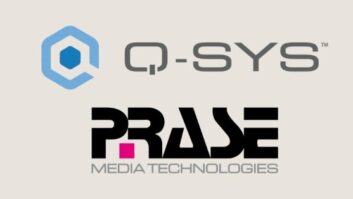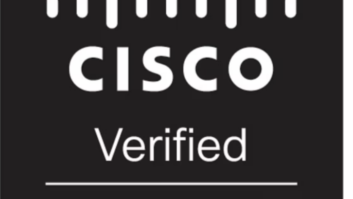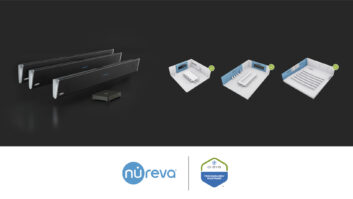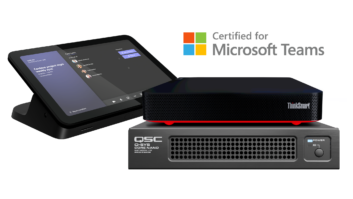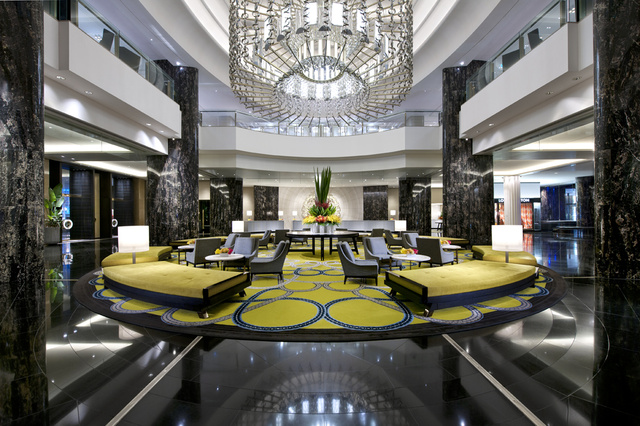
Digital Living, a Melbourne based AV integrator, was contracted to upgrade the audio systems at the Crown Spas complex in Melbourne, Australia. In the process, Digital Living saved the client an estimated 15-20% on the project by installing a QSC Q-Sys Core 500i processor at the heart of the system.
The project also features 22 QSC TSC-3 touchscreens and 15 QSC CX254 four-channel amplifiers. The Crown complex, located on the south bank of the Yarra river, is renowned for incorporating one of the largest casinos in the world, as well as three hotels, luxury shopping facilities, several nightclubs, a cinema, various restaurants and two spas, including the five-star Crown Spas.
The brief for the new audio system required the routing of four in-house audio streams from the Crown Casino’s main AV control centre to over 40 different zones in the Crown Spas, via a second switch in the luxury Crown Towers hotel. The system also had to integrate the Crown complex’s fire/evacuation Emergency Warning & Intercommunication System (EWIS). In addition, the system needed to be bidirectional, allowing the Spa managers the option of connecting iPods to provide custom soundtracks in the gym and spa rooms. Audio from inputs in the spas and gym areas had to be routable back to the proposed audio management platform for the complex, and accessible from the main control centre if required.
Due to the sheer size of the Crown complex, the audio network extends over considerable distances. From the audio inputs in the main control centre to the hotel is over 500m (1,600ft), and from the main control centre to the various spa and gym rooms is over another 100m (300 feet). When Digital Living first quoted for the refurbishment, the labour costs alone were considerable just to lay all of the proposed network cabling. Much of the existing Crown complex AV infrastructure is connected by fibre-optic cabling, and to similarly specify the new systems at the spa was going to be expensive.
“Giles Brading at TAG, the Australian QSC distributor, suggested we try looking at the numbers again with a Q-Sys system,” explained Matt Price, director at Digital Living. “When we did, we found we could make massive savings.”
Because Q-Sys networks can utilise ‘off-the-shelf’ Ethernet wiring and switches, much of the cost associated with traditional audio cabling and the labour required to install it could be struck from the original quote — and because of the distances involved, this amounted to a large saving. In the completed Q-Sys network, audio is still routed to and from the Core 500i processor in the main AV control centre to the Crown Towers hotel via fibre-optic cable, but existing fibre connections were used for this leg. From the hotel data racks onwards, all audio is routed on CAT6 networking cable laid by Digital Living, which connects the Q-Sys I/O Frames, TSC-3 touchscreens and CX254 amps in the spa and gym areas.
“I was very impressed at the saving we achieved,” continued Price. “We have used QSC amps and speakers on a lot of projects in recent years, but tended to use other products for the audio management layer. We had looked at using Q-Sys on smaller projects, but we hadn’t proposed it for an installation on this scale before. This project made us look into it in more detail, and made us into total converts. The amount of bidirectional traffic that’s passing through those Ethernet connections at the Spa and across the Crown complex is pretty impressive.
“The individual components, such as the Core 500i processor, were a little more expensive than other equipment we have used in the past, but the investment in it was well worth it. Because of the complexity of the wiring and infrastructure required to run this network over this large area, when you looked at the costs of the system as a whole, there was a significant saving with Q-Sys — in the region of 15 to 20 percent to our customer on this project. Given this outcome, and the features and versatility of Q-Sys, it’s now developed into our primary audio networking product.”


